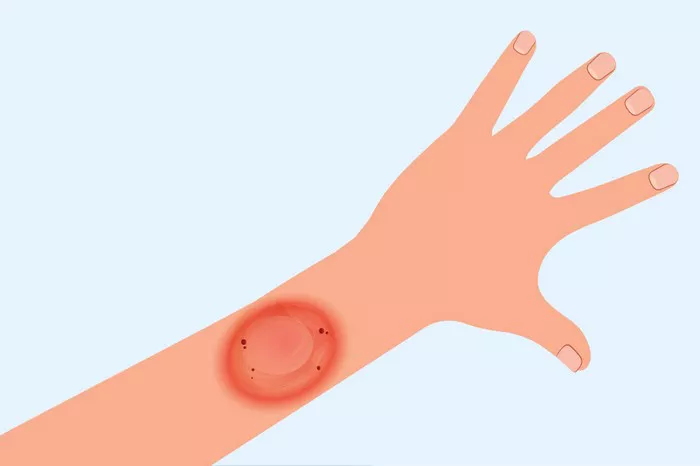Vitiligo is a chronic skin condition characterized by the loss of pigment, resulting in white patches on the skin. It affects about 0.5-2% of the world’s population, with no known racial, ethnic, or gender predilection. Despite its prevalence, vitiligo remains a condition shrouded in myths and misconceptions. One common query among those affected and their caregivers is whether vitiligo itches, particularly during its spread. This article aims to delve into this question, exploring the nature of vitiligo, its symptoms, and the underlying mechanisms that may contribute to itching during its progression.
Understanding Vitiligo
Vitiligo occurs when melanocytes, the cells responsible for producing skin pigment (melanin), are destroyed or cease to function. The exact cause of this melanocyte dysfunction is not fully understood, but several theories exist, including autoimmune destruction, genetic factors, oxidative stress, and neural mechanisms.
1. Autoimmune Theory: The most widely accepted theory is that vitiligo is an autoimmune disorder. The body’s immune system mistakenly attacks and destroys its own melanocytes. Evidence supporting this theory includes the presence of autoantibodies against melanocytes in patients with vitiligo and the association of vitiligo with other autoimmune diseases, such as thyroid disorders, type 1 diabetes, and rheumatoid arthritis.
2. Genetic Factors: Genetics also play a significant role in vitiligo. About 20-30% of individuals with vitiligo have a family history of the condition. Several genes associated with immune function and melanocyte biology have been implicated in vitiligo, although the exact mechanisms remain unclear.
3. Oxidative Stress: Some studies suggest that oxidative stress, resulting from an imbalance between the production of reactive oxygen species (ROS) and the body’s ability to detoxify these harmful compounds, may contribute to melanocyte destruction. Elevated levels of ROS and reduced antioxidant defenses have been observed in the skin of vitiligo patients.
4. Neural Mechanisms: The neural theory posits that neurochemical mediators released from nerve endings in the skin may contribute to melanocyte destruction. This theory is supported by the observation that some vitiligo patches follow a dermatomal distribution, corresponding to the areas supplied by specific nerves.
Symptoms of Vitiligo
The primary symptom of vitiligo is the appearance of depigmented patches on the skin. These patches are usually white and can occur anywhere on the body. The most commonly affected areas include the face, hands, arms, feet, and genitals. In addition to the loss of pigment, some individuals may experience other symptoms, including:
1. Hair Depigmentation: Vitiligo can affect hair follicles, leading to the whitening or graying of hair on the scalp, eyebrows, eyelashes, and other areas.
2. Mucosal Involvement: The condition can also affect the mucous membranes, such as the inside of the mouth and nose, causing depigmentation in these areas.
3. Eye Changes: Vitiligo can involve the retina and other parts of the eye, although this is less common.
Despite these symptoms, vitiligo is generally not associated with pain or physical discomfort. However, the psychological impact of the condition can be significant, affecting self-esteem and quality of life.
Itching and Vitiligo: A Common Concern
A frequently reported symptom among vitiligo patients is itching, particularly when new patches are forming or existing patches are spreading. This raises the question: does vitiligo itch when spreading?
The Relationship Between Itching and Vitiligo
The sensation of itching, known medically as pruritus, can be influenced by various factors, including skin inflammation, dryness, and neural responses. In the context of vitiligo, several potential mechanisms could contribute to itching:
1. Inflammation: Some studies suggest that subclinical inflammation may occur in the skin of vitiligo patients, even in areas that appear normal. Inflammatory mediators such as cytokines and chemokines can stimulate nerve endings in the skin, leading to the sensation of itching.
2. Skin Dryness: Vitiligo patches often lack the protective barrier provided by melanin, which can lead to increased water loss and dryness. Dry skin is more prone to itching, as the lack of moisture can cause irritation and make the skin more sensitive to external stimuli.
3. Neural Changes: Changes in the neural pathways and neurochemical mediators in the skin may also play a role in the itching associated with vitiligo. The neural theory of vitiligo suggests that nerve endings in the skin may release neuropeptides and other chemicals that can contribute to melanocyte destruction and also trigger itching.
4. Autoimmune Response: The autoimmune nature of vitiligo may also contribute to itching. The immune response directed against melanocytes may involve the release of histamines and other pruritogenic substances that cause itching.
Clinical Evidence and Patient Reports
Several studies and patient reports provide evidence for the occurrence of itching in vitiligo:
A study published in the Journal of the European Academy of Dermatology and Venereology found that approximately 25-30% of vitiligo patients reported itching in their lesions. The study suggested that itching might be more common during the active phase of the disease, when new lesions are forming or existing ones are spreading.
Another study in the Indian Journal of Dermatology, Venereology, and Leprology reported that 20% of patients experienced itching in vitiligo patches, particularly during the initial stages of lesion development.
Patient testimonials and anecdotal evidence also support the occurrence of itching in vitiligo. Many patients describe itching as a common and sometimes distressing symptom, particularly when new patches are emerging.
Managing Itching in Vitiligo
Given that itching can significantly affect the quality of life of vitiligo patients, effective management strategies are essential. The approach to managing itching in vitiligo typically involves a combination of general skincare practices, topical treatments, and systemic therapies.
1. General Skincare Practices: Maintaining proper skin hydration is crucial for managing itching. Patients should use gentle, fragrance-free moisturizers to keep the skin hydrated and reduce dryness. Avoiding harsh soaps and hot water can also help prevent skin irritation.
2. Topical Treatments: Several topical treatments can help alleviate itching in vitiligo. These include:
- Corticosteroids: Topical corticosteroids are commonly used to reduce inflammation and immune activity in vitiligo. They can also help alleviate itching by reducing skin inflammation.
- Calcineurin Inhibitors: Topical calcineurin inhibitors, such as tacrolimus and pimecrolimus, are another option for managing inflammation and itching in vitiligo. These agents work by inhibiting the activity of T cells, which play a role in the autoimmune response.
- Emollients and Moisturizers: Regular use of emollients and moisturizers can help maintain skin hydration and reduce dryness-related itching.
3. Systemic Therapies: In cases where itching is severe or does not respond to topical treatments, systemic therapies may be considered. These include:
- Antihistamines: Oral antihistamines can help reduce itching by blocking the effects of histamine, a substance released during allergic reactions and immune responses.
- Immunomodulatory Agents: Systemic immunomodulatory agents, such as corticosteroids or immunosuppressive drugs, may be used in more severe cases to modulate the immune response and reduce inflammation.
4. Phototherapy: Phototherapy, which involves exposing the skin to specific wavelengths of ultraviolet (UV) light, is a common treatment for vitiligo. Phototherapy can help stimulate melanocyte activity and repigmentation, and it may also help reduce itching by modulating immune responses in the skin.
The Psychological Impact of Itching
While the physical discomfort of itching is a concern, the psychological impact should not be underestimated. Itching can exacerbate the emotional and psychological burden of vitiligo, contributing to anxiety, stress, and reduced quality of life. It is essential for healthcare providers to address the psychological aspects of itching and provide comprehensive care that includes psychological support and counseling.
Future Directions and Research
As our understanding of vitiligo continues to evolve, ongoing research aims to uncover the precise mechanisms underlying itching in this condition and develop more effective treatments. Some areas of research include:
1. Immune Modulation: Investigating new ways to modulate the immune response in vitiligo, potentially targeting specific pathways involved in itching and melanocyte destruction.
2. Neuroimmunology: Exploring the interactions between the nervous system and the immune system in vitiligo, with a focus on how neurochemical mediators contribute to itching and melanocyte destruction.
3. Skin Barrier Function: Understanding the role of skin barrier function in vitiligo and developing treatments that enhance barrier integrity to reduce dryness and itching.
4. Patient-Reported Outcomes: Incorporating patient-reported outcomes in clinical trials to better understand the impact of itching on quality of life and evaluate the effectiveness of new treatments from the patient’s perspective.
Conclusion
Vitiligo is a complex and multifaceted condition with a range of symptoms, including the potential for itching, particularly during the spread of lesions. While itching is not universally experienced by all patients with vitiligo, it is a significant concern for many and can impact quality of life. Understanding the underlying mechanisms of itching in vitiligo, as well as effective management strategies, is crucial for providing comprehensive care to those affected by this condition. Through ongoing research and a holistic approach to treatment, we can continue to improve the lives of individuals living with vitiligo and address the physical and psychological challenges they face.
Related Topics:


























